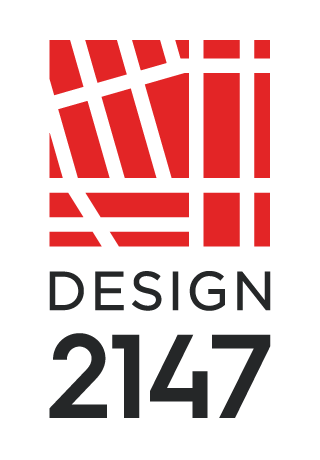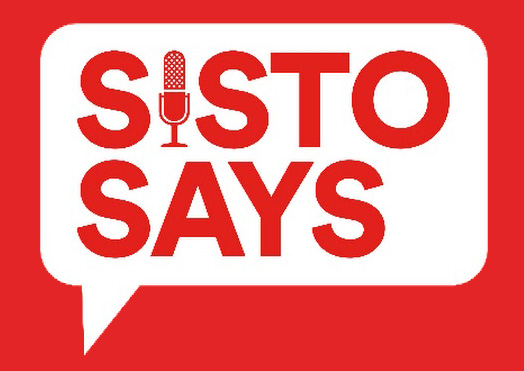Design 2147 CEO Sisto Martello recently spoke with Vincent Giagni, owner of luxury bathroom and kitchen fixtures company Pelham & White, about the impact of tariffs on the materials supply chain. Here are some of the important takeaways from the conversation.
Q: Tell us a little about Pelham & White.
A. It started out as us being manufacturers here domestically, originally supplying cabinet hardware primarily to the Home Depot Expo years ago. We ended up not being able to be competitive in supplying the cabinet hardware and ventured overseas in the early nineties to bring in the product and import it, and we built a cabinet hardware business doing that.
The cabinet hardware business morphed into decorative kitchen faucets, stainless steel kitchen sinks, and our most recent product category, ready-to-assemble kitchen cabinets.
You’d be challenged to find an easier connection method, an assembly method, than what we use on the cabinets. I tell people, it takes you longer to take it out of the box than to put it together. With our product, everything is preassembled, so it’s really just a matter of assembly and putting it together and it doesn’t take long.
Q. Walk us through the process when a developer calls you and says, for example, I have 200 units of multi-family housing and I need the whole package: kitchen cabinets, plumbing fixtures, etc. What are the implications of the current tariffs on that order?
A. The tariffs are currently the biggest challenge when we look at a project. In most cases, you’re probably at least a year out from when they actually would need the majority of our type products. You have to submit your bid, win the award, and then you just don’t know what’s going to happen.
Q. Explain how the potential timing delays can impact the pricing. Is it because on the date the order is placed, the tariff is set between the two countries at X, but when they ship it, maybe eight months from now, the tariff is Y?
A. It’s really about the time that it actually gets on the container. We had an instance where I had ordered stainless steel kitchen sinks from Vietnam back in November. They arrived in March and they assessed the 25% steel tariff that went on the week before to the shipment of sinks. We ended up not being able to sell the sinks because they were going direct-to-consumer and some of those sinks were going through Home Depot.
Eventually, obviously, you have to raise the prices, which gets passed on to the consumer ultimately. We’re still holding the sinks because we don’t have enough margin to absorb 25% or expect to absorb a hit like that. And now it’s just moved to 50%. It’s really challenging. It’s hard to pinpoint pricing. I think what we’re all really looking for is some form of stability. At least if you know what it is, you can incorporate that and can figure out a pricing structure.
Q. One of the things that we’ve always stayed out of is the politics of the federal government, the politics of our city. We’re always pro-law. We believe that zoning laws and building codes are in place to protect the people. Over my lifetime, there was a time where the message was, let’s build everything in America. Then it was, we can’t be competitive, so let’s help these other countries and establish their growth and we will have them manufacture things for us. Under this administration today, it seems like we’re going back to trying to get America to start building product again. That is not easy. It takes time with all the EPA regulations and all the laws and all the federal regulations. You can’t just turn the switch on. Is that true in your industry?
A. Would I love to make everything in America? There’s no doubt about it. The reality is, it would be very difficult. First of all, I’d have to build a facility and get the financing for a facility. We’re a little guy. Then, our labor rate here is still not going to be what it is in some of these other countries. And if, all of a sudden, the laws change or tariffs or duty and revert back to a number where really not competitive, then now you’ve built a factory that you can’t support. It just can’t be done overnight.
Q. For you it is a big moving target, because you buy product from around the world.
A: Yes, we source product all over the world depending on what type of product you’re looking for and the level of quality. For instance, our fire clay sinks come from the United Emirates, our stainless steel sinks come from Thailand or Vietnam, so we’re all over the place.
Q. When you’re pricing these things, those tariffs have a major impact on your bottom line.
A. Yes.
Q. Have you seen the supply chain change since the tariffs were implemented? Obviously manufacturers want to make product as fast as they can make it. They want to put it on a container and get it here to the us, but then all of a sudden this wrench of a tariff gets thrown in. Did that slow down manufacturing? Did it increase it? Did it stay the same?
A. It actually does both. It speeds it up and slows it down. It slows it down when they make the announcement. And then if they back off, it speeds it up because everybody wants to get. If there’s a 90-day pause, for example, then you want to bring all the material in in that 90-day window.
Q. Logistically, how is it, getting product from overseas here and then getting it here to a job site in New York City?
A. It’s really not that difficult. We end up doing a lot of distribution ourselves. We bring it in our facility. We will rent a truck and deliver it to the job site. That’s not really the biggest issue.
One of the large issues that’s changed over the last few years is actually that inbound trucking has gotten more expensive. I don’t know if you remember, but probably about a year and a half ago, container prices went crazy. We were paying five times more in a period of 60 days than what we were used to.
Then container prices came back down, but the trucking from the ports to the facilities went up dramatically.
Because of the instability in the marketplace, and not knowing exactly what the, what the tariffs are going to be, people are somewhat uncomfortable. They don’t know what their 401k is. They don’t know whether they should go do their kitchen or bathroom. And everyone’s kind of in a holding pattern until this kind of settles down.
Q. A lot of the people that I speak to, between interest rates being high for commercial projects, and uncertainty about product and the cost and the tariffs, it snowballs into people being hesitant on big projects.
A. Product costs have, in all industries, gone up dramatically. Hopefully, this will somewhat stabilize over a very short period of time soon. Right now we’re feeling the ramifications of the uncertainty, and I think the longer and longer it goes on, the worst it’s going to get.
Q. So from when this started in February or March, where are we today in June?
A. There was a 90-day pause on the reciprocal tariffs. They’re working with all different countries to try to figure out something. I think ultimately you have to get to a point where you know what the number is, and then once you know what the number is, then everybody can get comfortable and adjust one way or the other.
The last thing we want to do is have to increase prices. We try to bring value with quality product, and it’s hard.
Q. As an example, when you look at a piece of sheet rock that’s a half inch, four by eight and the wholesale cost has gone from $7 a sheet to $15 a sheet. Retailers don’t want to sell that product for $17 or $18; they want to keep selling it at $15 because that’s the right price point. If they just keep increasing it, it’s just not good for any business. No matter what that product is, the price point has to be right. If not, they’re not going to put it in the store. You’re not going to sell it.
A. That’s correct. Once you hit a certain price point, you’re not selling product.
Q. The market dictates the product and the cost.
A. And your competition. If we’re selling a cabinet for $150 and the other guy’s at $75 and another guy’s at $300, if you’re comparing apples to apples and the quality of the cabinet, you’re in an environment where everybody knows, and consumers are smart. Not that they weren’t smart years ago, but there’s just so much information out there for them to research and look at, where 15 or 20 years ago, you went into a store and they had what they had.
I think the challenge for the consumer when it comes to that is when you really price shop, it’s very difficult to compare items because they’re not all the same. There’s product being sold, especially online, that doesn’t meet codes and standards that are put in place. When you see something that’s $8 and the next nearest thing is $60, you know there’s something wrong with the $8 thing. That’s a challenge, because I don’t think any consumer wants to buy a kitchen faucet that has lead in it, or a kitchen cabinet that has formaldehyde in it. That’s the one thing that consumers have to be very, very careful about when shopping online and buying product randomly.
Q: For all the reasons we’ve discussed, we’re not going to hold you to this, but what is your best guess about what supply chain and tariffs will look like several months from now?
A. I really think that over the course of next several months that there will be tariffs. I certainly think they’ll be reasonable, not what we had first seen where they’re 50-60% on certain items. I think that’s unreasonable. There are also certain places that you have to get product from, and you could never absorb that kind of increase. I think ultimately, fairer heads will prevail. People will sit down and have conversations.
I definitely think that there’s going to be tariffs, but I certainly think they will be somewhat manageable and it’ll work both ways.
Q. As a small business, you do think it’s difficult for you to just start up manufacturing here. The investment is too big?
A. Yes. First of all, the investment’s large, and you would need such a long-term commitment to make sure that you’re able to recoup the money that you’re investing, because like I said, if something changes administration-wise, then it goes back the other way. You’ve got this facility now.
It’s quite a challenge. Like I said, I’m really pro-having the product built here, but there has to be a real plan on how to get that done.


